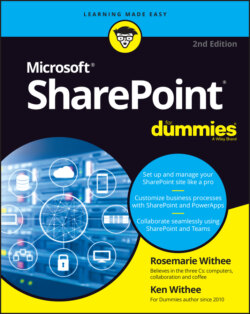Читать книгу SharePoint For Dummies - Rosemarie Withee - Страница 41
Data center and hardware
ОглавлениеIf you have ever toured a data center, you have some idea of the amount of effort and resources it takes to keep everything running. Data centers have rows and rows of computers with flashing lights, humming fans, and coils of cables running ceiling to floor. Control rooms that resemble something NASA would use to run space missions monitor all these servers. The control rooms contain computers and monitors that report on everything in the data center, from temperature and humidity to individual fans in particular servers and everything in between. These control rooms are often called a network operation center (NOC) and are the nerve center for a modern data center.
Most organizations that have the need for servers find a data center that can be used to host their gear. Hosting your computers in a data center can cost a fortune, but paying to host your own gear in an inferior environment can cost even more in the long run.
Microsoft invested a tremendous amount of money in building its own state-of-the-art data centers that house the servers that make up SharePoint Online. The nice thing about SharePoint Online is that you don’t have to worry about the various costs of hosting and managing your own gear. The price you pay for SharePoint Online covers everything, including the data center.
The servers that run SharePoint Online are state of the art and come from the leading industry manufacturers. In fact, Microsoft has modularized the setup, and the computers come in massive containers that look very similar to the containers you see on cargo ships. These container pods are sealed by the manufacturer and never opened at the data center. This is a security mechanism to keep humans away from the computers. When a single piece of hardware fails, the workload of that server is simply shifted automatically to other servers (possibly in other pods). When enough servers fail, the pod is taken offline and the workload of that pod is shifted to another pod without service interruption. A new pod with the latest hardware is then shipped to replace it, and the old pod is decommissioned, with the data being wiped to security standards, and sent back to the manufacturer.
Microsoft has developed this system of data centers and pods throughout the country with built-in redundancy. If a data center goes down, the workload is shifted to another data center. If a pod goes down, the workload of that pod is shifted to another pod. If a server within a pod goes down, the workload of that server is shifted to another server. This system of redundancy is included in the price of SharePoint Online. You might care about how it works or you might just care that Microsoft has guaranteed uptime of 99.9 percent. In the end, you’re free to focus on your business and solving business problems using the SharePoint platform without having to worry about what it takes to make that platform consistently available.
